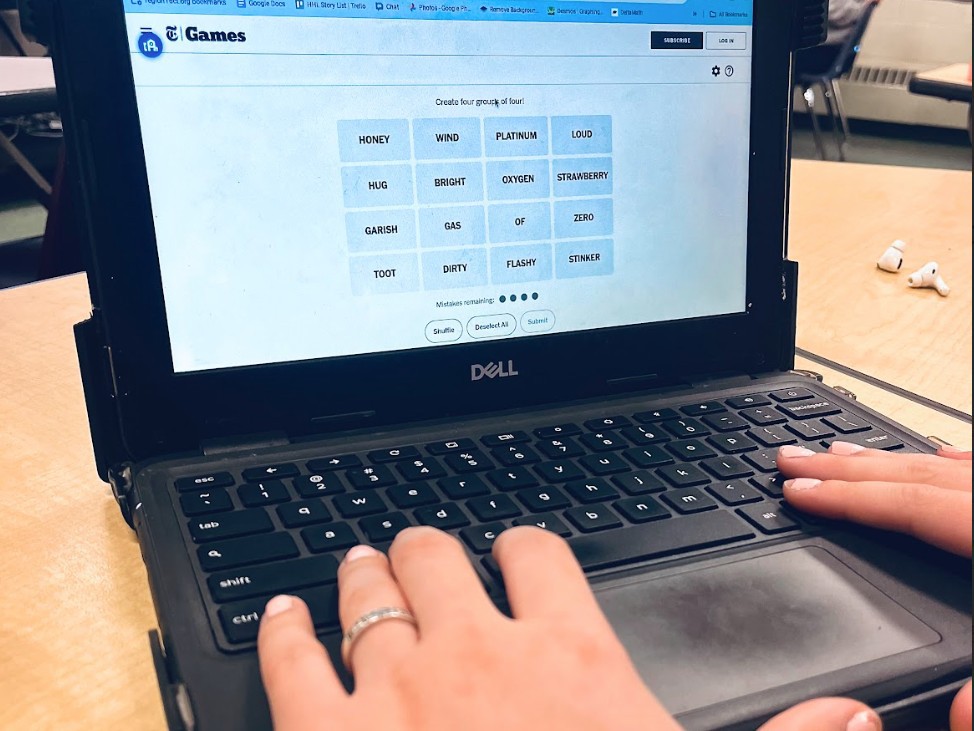No matter the age, class, or hobbies a person has there is a good chance they have heard of, or participated in the wildly popular New York Times web games.
Wordle and Connections are both free games produced through the New York Times website that anyone can play on any device. Wordle was at its peak popularity last year, but students and staff still play the word game daily. Connections is a newer game, and the games popularity has been spiking over the last few months.
Wordle is a simple game where you get five tries to guess the word of the day. Gray letters are not included in the word at all, yellow letters are included but they are not in the right spot, and green letters are in the word and in the right spot. These words can be any five-letter word in the dictionary.
On the other hand, Connections is about matching words together. The game features sixteen words that need to be put in groups of four. These groups have varying categories such as “different parts of the eye” or “words with a silent w”. Word games like this challenge your brain while also providing a few minutes of entertainment.
The games are reset every twenty four hours, making the games accessible to players every day of the week.
“I play Wordle and Connections on a daily basis,” said active player Hannah Mudry. “I always play them when I am bored.”
Wordle and Connections are mind stimulating-games that test the player’s cognitive ability. The popular games are not always easy; players love a challenge.
“I always try to play Connections but I can never seem to get it right, some of the categories are so random,” said player Melissa Martins.
The challenge keeps players coming back for more. But why?
There are several physiological aspects of the web games that keep the players coming back for more. The friendly competition, the mind test, and the creativity of the games are all essential to the success of the program.
Friends in school and outside of school have gotten used to challenging each other. The web games have turned into a competition of who can get the Wordle of the day first and who got the Connections and who did not.
“ [People keep coming back] because players want to win, most people compete with their friends to see who can win first,” said Martins.
It is basic human nature, people love to win and they will try again and again in order to keep winning and keep feeling that boost of serotonin they get when they solve the word puzzles of the day.
“Playing word games causes people to think more,” said player Tiana Preston. “I like it for the challenge.”
A part of what makes the games so challenging is the limited attempts players get. Wordle gives you five attempts to guess the word of the day. Connections gives you four attempts to match words together to form four groups. On top of that, the games reset every twenty four hours. Players are forced to wait until the next day to try again. When players know that they have limited attempts to play, and have to wait a while to play again, they value their attempts more and therefore try harder to succeed.
“I think that the games are addicting because people have the chance to play a new version of it [Wordle and Connections] everyday,” said player Evan Moore. “If you succeed in getting it right that day it is like gratification.”
Seeing those five green letters or a colorful array of perfectly matched word groups brings players a boost of serotonin. And the best part, the creators of the games get more and more creative every day. The creators like to trick the players and whirr their gears, it is components like this that keeps the popularity of the games consistent. Crack open your computers and light up your phones to partake in the daily challenge.



















